A Day as a Doyle Fellow: Kayla Tozier
My name is Kayla Tozier and I am a junior at UNH pursuing a Bachelor's of Earth Science degree with a track in oceanography. My goal is to study chemical oceanography with a focus on ocean acidification and ocean conservation. This summer, I worked as a Doyle Fellow at the UNH Jackson Estuarine Laboratory in Durham, NH under the mentorship of Gregg Moore.
For the majority of my fellowship, I worked with UNH Master's student Hanna Mogensen on her microplastics project. We spent our time collecting water samples in the Hampton-Seabrook estuaries and working in the lab to determine methods of digesting and filtering these samples to look for microplastics. This photo story is a look into my time as a Doyle Fellow, through my eyes!

This photo was taken on one of my first days during the Doyle Fellowship. It was my first field day experience, where I was helping Cate and Hanna with their microplastic water sampling with a mantra trawl net. I learned how to take field notes!
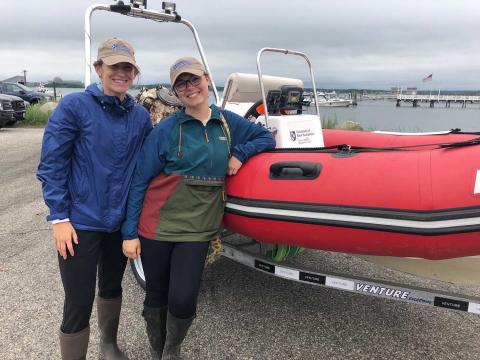
Cate (left) and I were posing in front of my mentor, Gregg Moore’s, boat named “Big Red”. We were meant to go out and take water samples soon after, but we all soon realized that the engine was broken and had to go home. Sometimes that’s how it goes!
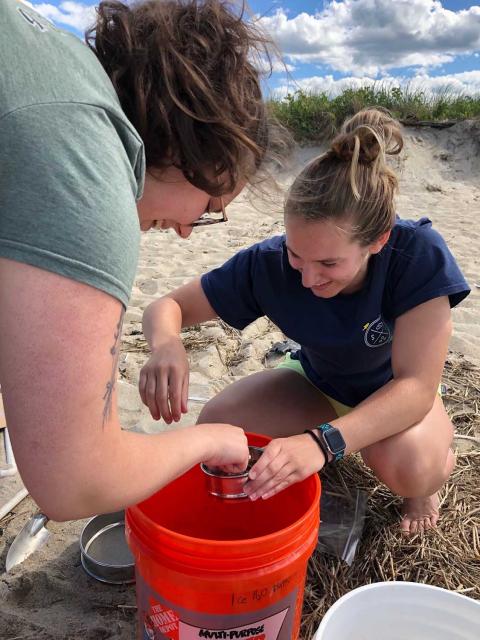
On this day, we were taking our first independent beach samples to look for microplastics. The week before, we had been trained by the Blue Ocean Society on how to take correct sand samples. This is Cate and I laughing because we had a comically small sieve for such a large sand sample due to a lack of sieves back at the lab.
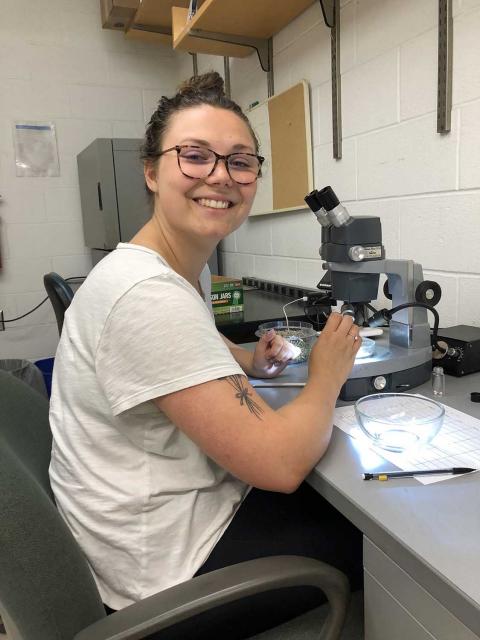
After collecting and sieving all of our beach samples in Seabrook, NH, I spent a good chunk of the summer sorting through them under a microscope in the lab to visually ID any microplastics.
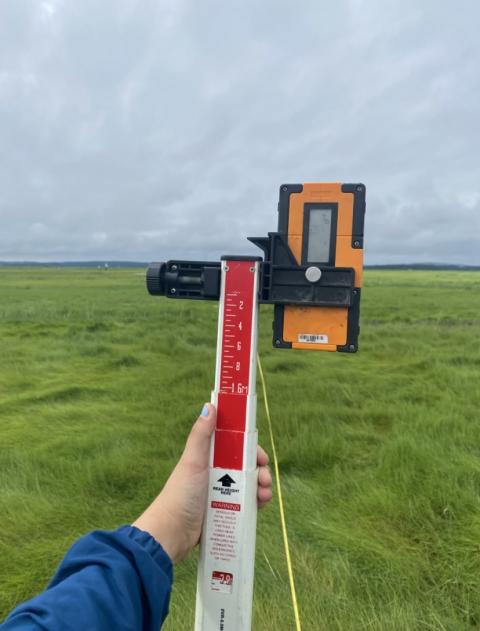
On this day, I strayed from my typical microplastics work to give a field work hand to Grant and Demetrius on their estuary ditching project. We went out to Parker River Refuge and took elevation and vegetation data along multiple transects to add to past data. This would allow them to see if their ditch restoration efforts were effective. Pictured here is me holding a tool for laser level elevation. Unfortunately, halfway through the day an unexpected storm hit, soaked us to the core, and sent us home!
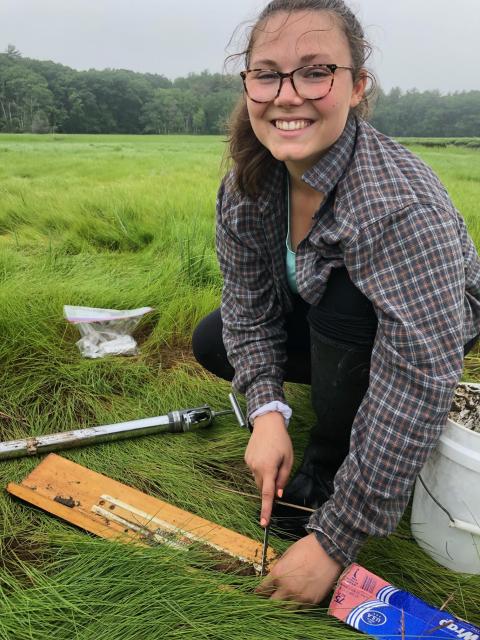
Another part of the microplastics project was looking at microplastics in sediment cores from the same sites that the water samples were taken. This process includes taking sediment cores using a corer, cutting them to the desired length, and then taking them back to the lab to dry in the oven and eventually process using density separation.
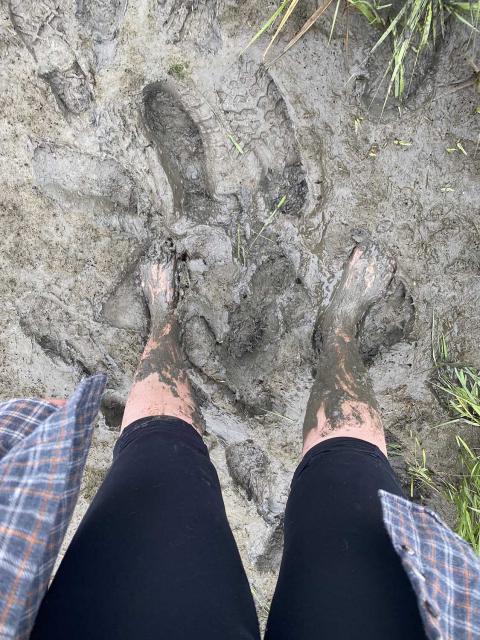
As part of the sediment core sampling, Cate, Hanna, and I attempted to walk through a mud flat to reach some high marsh. As you can see, this did not go as planned. At this point, my boots were completely submerged in the mud and Hanna was on her hands and knees digging them out for me!
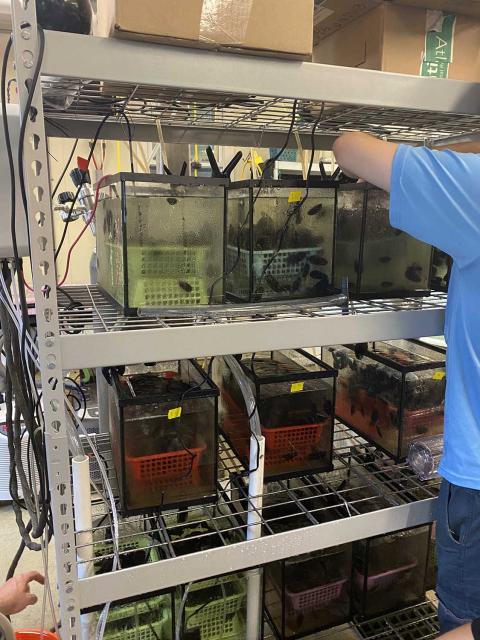
Towards the end of the summer, I decided to join the other Doyle Fellow, Shelly Lancaster, for a day to shadow her project. We went to the Coastal Marine Lab in New Castle, NH to check out their mussels. They are conducting experiments on the effects of acidification on the growth of the mussels. It was such a great experience to see a new lab and get a peek into other projects going on. This trip ended up being a great opportunity for me because I connected with a researcher who asked me to work with them in the coming months.

My last field day of the summer was the wildest. Jenny, a JEL lab tech, and I went out for a nice day of collecting sediment cores out in Hampton/Seabrook on our kayaks, but did not expect the afternoon that we were about to have. This was a beautiful, sunny day and we were having a great time on the water. We reached one of the islands, starting to take a sediment sample, and then looked up to see a large, dark cloud above our heads. Rain started to drizzle on our backs, which we weren’t phased by, until the rain turned into a painful downpour. I then heard the loudest crackle of thunder I ever have in my life, and Jenny pulled me down onto the ground. We laid on the ground in the grass, alongside the crabs, with rain pelting onto our backs to avoid any danger from lightning. After about ten minutes, the clouds cleared, the bright blue skies appeared once again, and we continued kayaking and collected all of our samples despite our equipment being just as soaked as we were. Though this was a frightening experience, it was a great lesson on how unexpected field work can be, and that safety is the number one priority. This day left me exhausted, in a good way, not to mention the fact that this was my first time kayaking, and we went five miles!
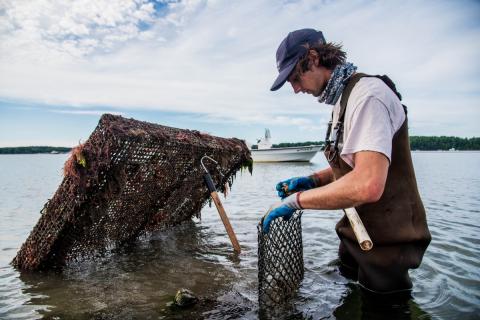
Applications are open for the 2022 Doyle Fellowship! Follow the link below to learn more and apply.
Applications are due March 21, 2022 at 11:59 p.m. ET.